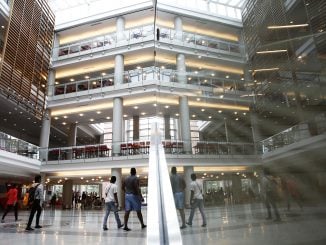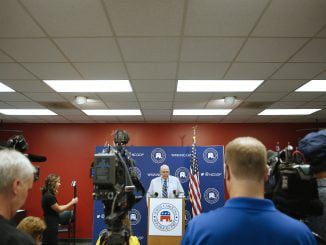
RALEIGH — At Dec. 1 meeting of the legislature’s Joint Legislative Education Oversight Committee, it was revealed by N.C. State Board of Education officials that 19% of students are not regularly attending classes.
The main agenda item for the committee was an update on the “Implementation of Remote Instruction” from officials with the North Carolina Department of Public Instruction (NCDPI) that included Dr. David Stegall, NCDPI’s deputy superintendent of innovation, and Freebird McKinney, director of legislative and community affairs for the N.C. State Board of Education.
The key highlights of the report include 18% of districts are using Plan C, which is remote instruction only. Additionally, 59% of N.C. students are learning in-person, and an alarming 19% of remote instruction students are missing “at least two days a week.”
In his remarks, Stegall indicated that students who are not attending are missing more classes than normal. He said it is likely there will be higher failure rates for the fall semester, graduation rates will drop and a likelihood of large numbers of students who will need to repeat a grade.
Stegall said there will be “learning gaps” which will take years to recover from. As an artifact of those gaps, a new way to assess students going forward may be needed.
Stegall also told legislators that 82% of districts are operating under Plan A, full-time in-person instruction, or Plan B, limited in-person instruction with a remote instruction component. He also said that 36% of students are receiving some form of instruction across the multiple plans, indicating that there are hybrid plans in use.
Sen. Rick Horner (R-Nash) remarked that education during the COVID-19 outbreak seems to have been a “wasted year.”
Only 53% of students who typically qualify for free and reduced meals are currently receiving them, according to Stegall.
During the meeting, lawmakers on the committee questioned Stegall on whether or not the governor has signaled if he will allow middle and high schools to return to in-person instruction under Plan A. Stegall avoided the question, saying instead that the State Board and NCDPI were following the advice of the N.C. Department of Health and Human Services (NCDHHS).
Last month, NCDHHS officials told the State Board of Education that K-12 schools were not driving the increase in positive tests. NCDHHS state health director and chief medical officer Dr. Elizabeth Cuervo Tilson told the board that “we are not seeing schools as a big driver of cases” and that children “have relatively low rates of infection and are not driving our increases.”
“We’ve got a disaster on our hands,” said committee co-chair Rep. Craig Horn (R-Union) of the impact of COVID-19 on education.
Horn’s Senate counterpart, Sen. Todd Johnson (R-Union), asked why private schools seem to be able to operate full time and in-person but public schools can’t.
Gov. Roy Cooper gave no fixed plan on school reopenings, allowing for districts to choose whichever reopening plan they felt most comfortable with. Cooper’s opening of elementary schools under Plan A, full in-person learning, was no exception, with 18% of districts opting to only use Plan C, which is remote instruction. The remainder of districts opened their elementary schools under either Plan A or a hybrid of Plan A and Plan B, which often entails a three-week cohort rotation schedule with only one week of in-person instruction.
The state’s largest district, Wake County, used a hybrid plan. Wake County plans to bring all elementary students back full time in the second semester, including fourth and fifth graders, who have been forced to use the hybrid plan. The district currently has no plans to bring middle and high school students back full time in-person in the second semester.
According to the most recent data provided by NCDPI, for the second month of school, the statewide average daily membership (ADM) number fell by over 27,000 public school students. Compared to last year at the same point, statewide public-school enrollment has dropped by approximately 50,000 students (3.6%).
The biggest enrollment hit has been in kindergarten, and figures originally indicated 15,700 (13%) of would-be kindergarteners were not enrolled, more recent figures put the number at over 13,300. Other states have shown similar kindergarten enrollment declines. The drop has been attributed to parents “red-shirting” their potential kindergarteners by delaying their entry a year.
Charter schools are seeing the opposite effect of the pandemic as parents seek full-time in-person instruction for their children. So far for this year, N.C. public charter school enrollment has grown by 8,424 students, and only a quarter of the state’s over 200 public charter schools have reported enrollment declines.




